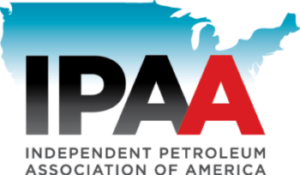Aug 29, 2019 IPAA Endorses Trump Administration Natural Gas and Oil Production Regulatory Revision
Changes Have Significant Implications for Small Business Producers
WASHINGTON, D.C. – In response to the EPA’s announcement today of changes from the Obama-era methane regulations (the 2016 New Source Performance Standards [NSPS], Subpart OOOOa), including the change of the regulated emission from methane to volatile organic compounds (VOC), Independent Petroleum Association of America (IPAA) Executive Vice President Lee Fuller gave the following statement:
“IPAA endorses the change because it would be far more cost effective with regard to the breadth of emissions sources. IPAA has consistently believed and recommended that a VOC‑based program is the appropriate pathway for regulating natural gas and oil production emissions. American producers are committed to managing their greenhouse gas emissions and continue to invest in the development of new technologies to mitigate and reduce emissions. These actions have and will continue to reduce methane emissions from natural gas and oil production operations.
“Under the EPA’s revision in the regulatory basis, new and modified sources would continue to be regulated. EPA’s 2012 Subpart OOOO were VOC based regulations – which regulated the larger components of natural gas and oil production emissions. Its Subpart OOOOa regulations can be appropriately revised.
“However, the hundreds of thousands of existing, small business-owned low-production wells wouldn’t be subject to inappropriate regulations that arise from a methane rule triggered by a little understood section of the Clean Air Act (Section 111 (d)). This section of the Act would compel these small wells to use technology requirements for new facilities rather than requirements designed for older, existing operations.
“Moreover, existing facilities in ozone non-attainment areas have been subject since October 2016 to Control Techniques Guidelines (CTG) promulgated by EPA that has been weaved into state regulations, as new State Implementation Plans have been created to meet the National Ambient Air Quality Standards for ozone. These CTG use reasonably available control technology that recognizes the difference between new facilities and older, existing ones.
“Importantly, because of the poor quality of emissions data available for these low production wells, the Department of Energy is conducting a study to determine an accurate emissions profile, one that could be used to determine whether and what kind of cost-effective regulatory program would be appropriate for federal and state emissions controls of small wells.”
Background:
- There are approximately 1 million oil and natural gas wells in the United States
- Emissions from these wells make up 1.2 % of the U.S. Green House Gases Inventory
- Of the 1 million wells, approximately 770,000 are low production wells, that produce 10 percent of total U.S. natural gas and oil, and make up about 10 percent of production-related emissions
- As noted above, wells that are in the greatest jeopardy from the methane rule are the 770,000 low production wells. These small business wells are the most economically sensitive in the United States and are already facing economic challenges due to low commodity prices.
- Of the remaining 230,000 wells, 125-150 thousand are subject to federal regulations under Subpart OOOO and, prior to 2012, substantial numbers were voluntarily using the same emissions control technology under EPA’s Gas STAR program. By the time an existing source regulation under Section 111(d) could be developed and implemented virtually all existing wells would be equipped with new source technology as a result of Subpart OOOO or would be low production wells.








